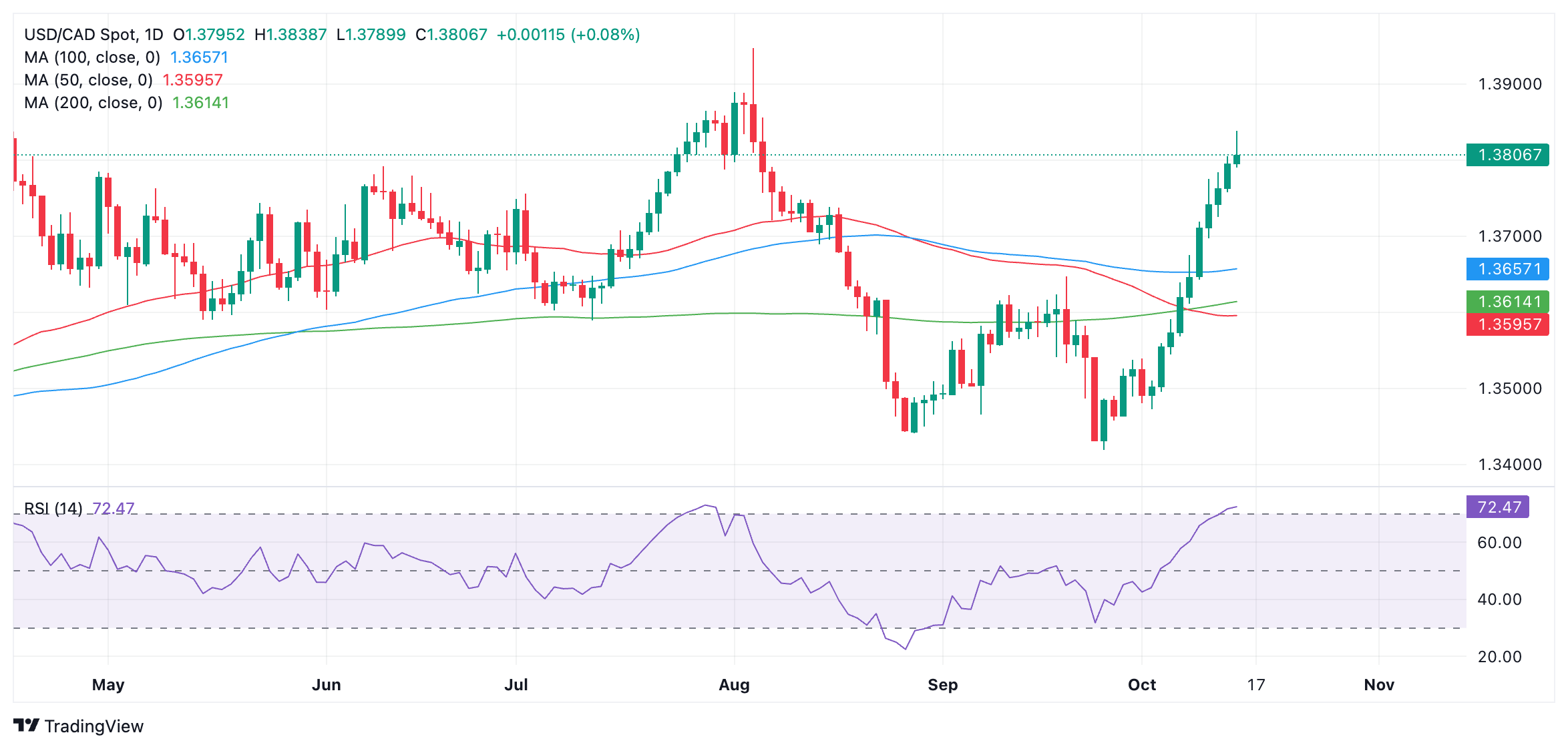- USD/CAD peaks following the release of lower inflation data in Canada.
- Although the headline CPI fell to 1.6% in September, the BoC’s core CPI rose.
- The pair has risen for ten consecutive days also due to a strong performance of the US Dollar.
USD/CAD extends its winning streak to ten consecutive days on Tuesday, accumulating more than 2.7% during that period as it reached a high of 1.3829. The latest gains are due to temporary weakness in the Canadian Dollar (CAD) following the release of lower-than-expected inflation data in Canada. This showed that the Consumer Price Index (CPI) fell to 1.6% annually in September, from 2.0% in August, and below estimates of 1.8%.
USD/CAD daily chart
Lower inflation suggests the Bank of Canada (BoC) will have to cut interest rates again after already making three consecutive 0.25% reductions, in order to reduce excess supply and shore up the labor market. The expectation of lower interest rates, in turn, reduces foreign capital inflows, which reduces demand for the Canadian dollar.
The drop in inflation was mainly caused by a 10.7% decrease in gasoline prices in September, and also affected related sectors such as transportation (down 1.5%). It marks the second month that headline inflation has fallen below the bank’s 2.0% target. The drop in gasoline prices is due to lower prices for crude oil, which is Canada’s largest export. This, in turn, is a headwind for the pair as lower oil prices are bearish for the CAD.
Although it rebounded as an initial reaction to the CPI data, USD/CAD quickly reversed and began falling shortly after the release, perhaps due to a rise in the BoC’s underlying CPI, or because the pair could be “overbought” – or entering the realm of overvaluation after its spectacular rally in October.
USD/CAD has made further gains on a strengthening US Dollar (USD) as markets reduce bets that the US Federal Reserve (Fed) will proceed with more aggressive rate cuts at its policy meeting. November after starting its relaxation cycle with a “mega” cut of 50 basis points (bps) (0.50%) in September.
From a 60% market-based probability that the Fed would follow up with another 50 bps cut in November, a series of better-than-expected data releases, especially labor market data, have reassured markets that the US economy is not on the brink of a cliff and has led to a dramatic revision of the odds to zero. On Tuesday, the probability that the Fed will cut by a smaller 25 bps stood at 90% with a 10% chance that the Fed will decide not to cut interest rates at all.
Other data on Tuesday showed the BoC’s core Consumer Price Index rose 1.6% year-on-year in September from 1.5% in August. Core prices rose 0.1% month-on-month, the same as in August, according to Statistics Canada data.
The headline CPI fell 0.4% month-on-month compared to the 0.2% drop in the previous month.
Source: Fx Street
I am Joshua Winder, a senior-level journalist and editor at World Stock Market. I specialize in covering news related to the stock market and economic trends. With more than 8 years of experience in this field, I have become an expert in financial reporting.








